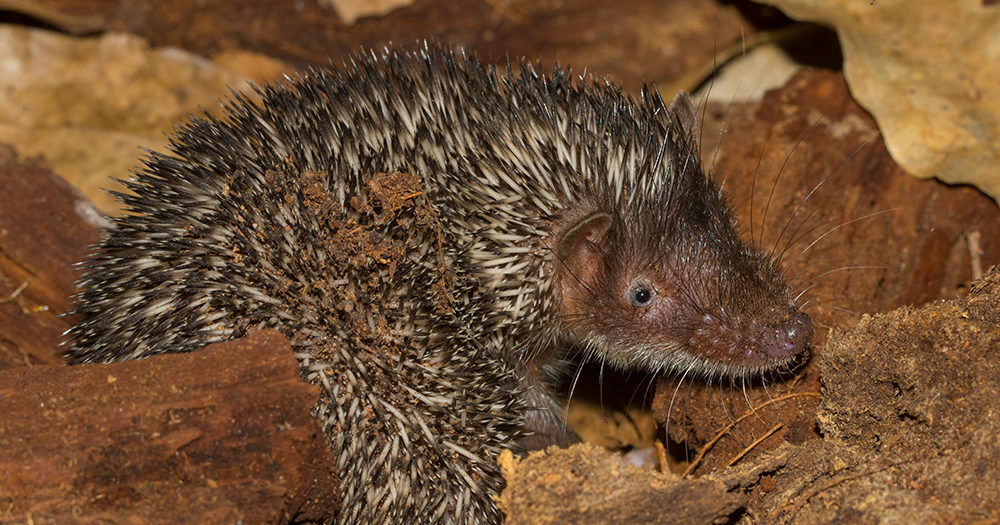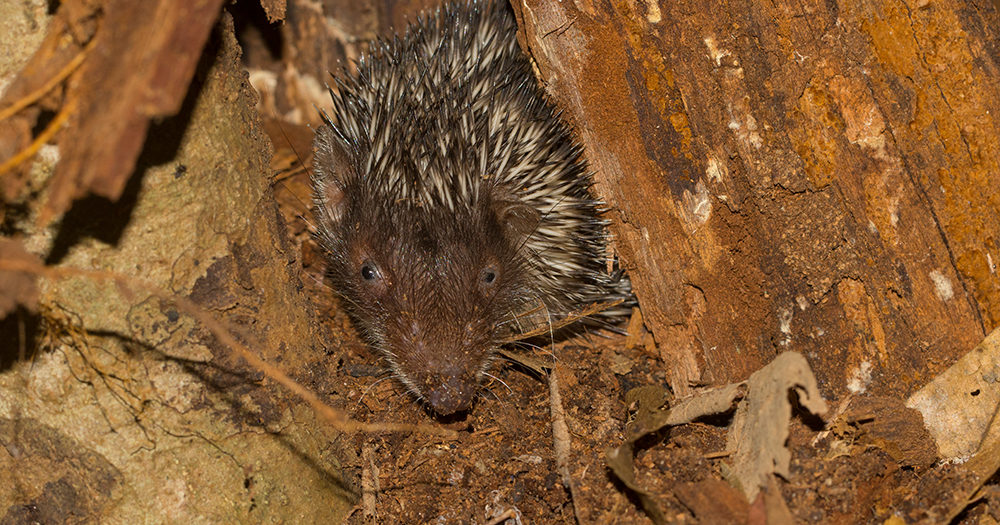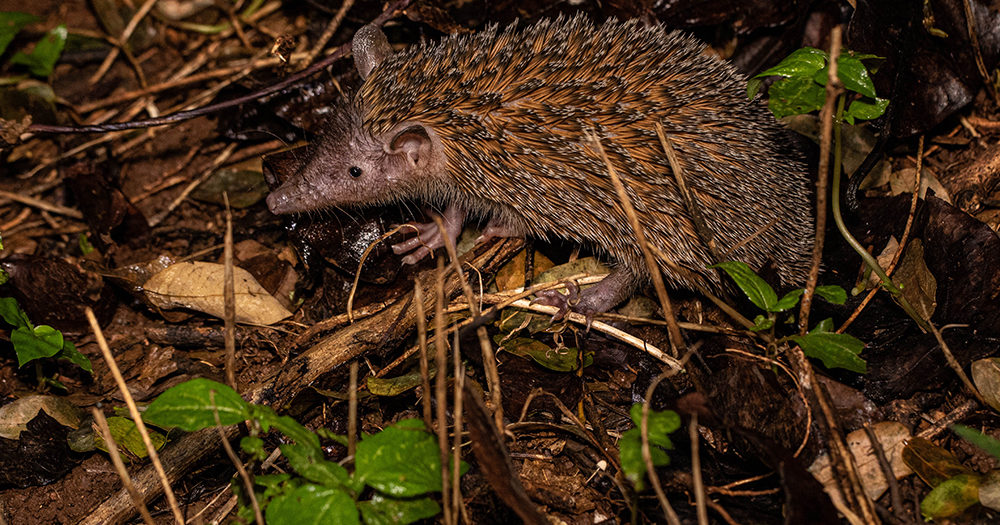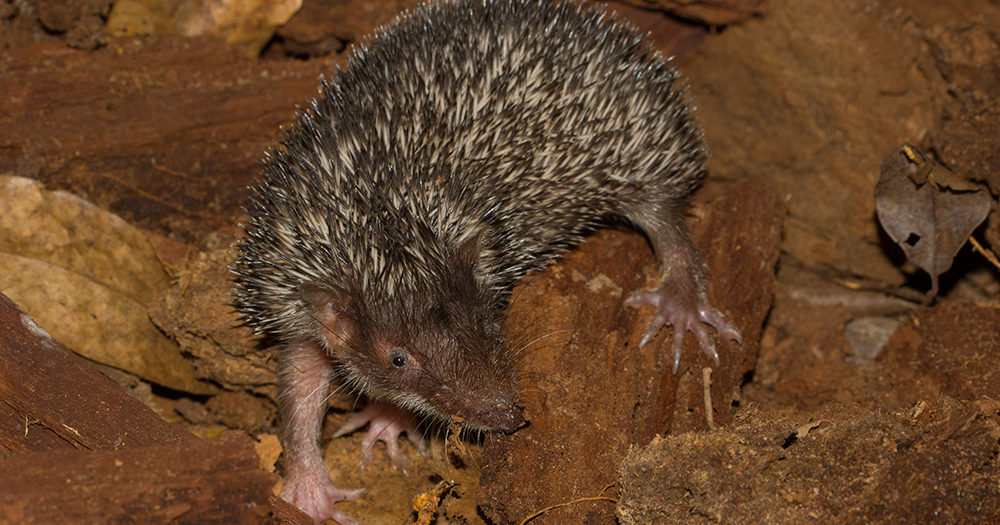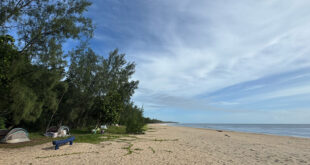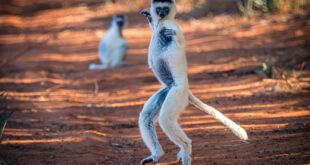Why it is called “great” is not known exactly. In fact, it is only slightly taller than his closest relative, the smaller hedgehog tenrec. Perhaps the term derives from its area of distribution: it covers almost all of Madagascar. Only in mangroves and marshes, the greater hedgehog tenrec does not occur. You can meet the greater hedgehog tenrec regularly in the national parks Ankarafantsika, Isalo, Amber Mountain, and Ankarana.
The greater hedgehog tenrec (Setifer setosus) is a loner. He does most of his activities at night. The greater hedgehog tenrec sleeps the day away in underground, self-dug caves in the sand or fallen, hollow tree trunks. Every day a new place to sleep is sought. Greater hedgehog tenrecs are usually found on the ground, although they are quite good climbers. Every greater hedgehog tenrec has its own territory. Although the animals do not grow very large with a bodyweight of just 150 to 300 g, they can occupy territories of up to 0.2 km². The territories of the females are – because they have to look after their young – only about half as big or even smaller. On the menu of the greater hedgehog tenrec is a colorful variety. Insects and arachnids make up the largest part. Earthworms, birds‘ eggs, or frogs also belong to the food spectrum. Even carcasses of mammals are eaten when the opportunity arises.
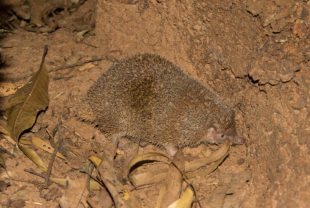
During the rainy season between October and March the male starts to be interested in the surrounding territories. He marks caves of females and shows by his smell that he would be interested in mating. When the female is ready, she stimulates the male by scratching his penis. The act itself can last a good half hour, as the genitals of the greater hedgehog tenrecs are literally “interlocking”. The female is pregnant for about two months. She looks for a larger nest one to three meters high in the tree and lines it with plant fibers. In this cave, she offers the offspring greater protection from nest robbers such as the Malagasy Tree Boa, the northern Malagasy Ground Boa, or the Fossa. The female bears up to seven young, which are born naked and blind. But they catch up quickly! At only four to five weeks, the young greater hedgehog tenrecs are already weaned. And they must be because the female is already ready to mate again. Up to three litters in one rainy season are known of greater hedgehog tenrec.
The high number of young also benefits humans. Along the east and west coast, the greater hedgehog tenrec is often hunted and eaten. Sometimes you can see children or adults standing at the roadside of the Route Nationale and waving a stick. If you are wondering what exactly is wriggling on a string, these are mostly greater hedgehog tenrec or tailless tenrecs (Tenrec ecaudatus). They are sold alive as food supplies, killed with a blow to the neck, and grilled over an open fire after the spines have been removed. Especially in the cooler dry season, it is very easy to catch greater hedgehog tenrec. Because, like its smaller relative, the greater hedgehog tenrec falls into a so-called torpor during the cooler season.
During the cold spell, the greater hedgehog tenrec reduces its body temperature until, at around 20°C, it almost corresponds to the outside temperature. Many mammals would not survive this body temperature. The greater hedgehog tenrec uses its extraordinary ability to save energy during the dry season. In many regions of Madagascar, there is hardly any food available at this time of year, but foraging would consume more energy. So the greater hedgehog tenrec simply sleeps through this time – and becomes active again just in time for the beginning of the rainy season.
 MADAMAGAZINE Your Magazine about Madagascar
MADAMAGAZINE Your Magazine about Madagascar
